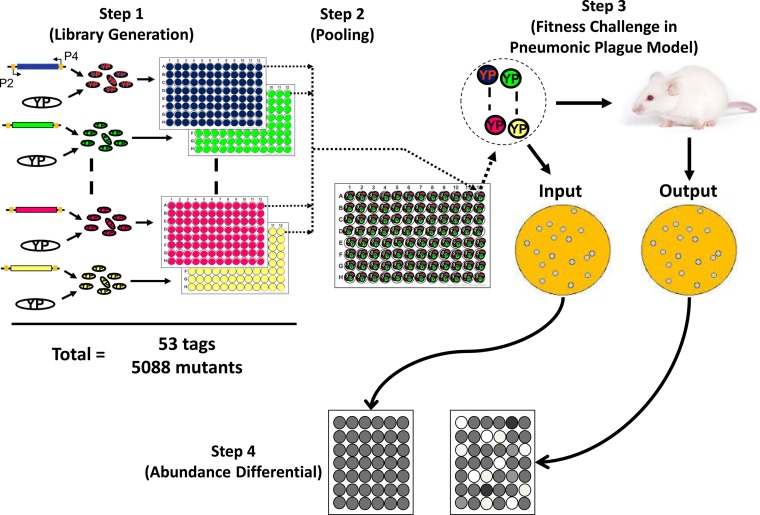FIG 1.
Schematic illustration of the signature-tagged mutagenesis (STM) approach. Step 1, transposon mutants with 53 unique signature tags were generated through a mini-Tn5 transposon system to create a library of 96 representative Y. pestis (YP) mutants for each tag, totaling 5,088 mutants. Step 2, one mutant for each tag was combined to generate 96 pools of 53 uniquely tagged clones. Step 3, each pool was used to generate an input pool of bacterial DNA and to infect mice by the i.n. route (5 LD50). At 3 days p.i., disseminated mutant bacteria were isolated from the spleens and their DNA extracted, providing the output pool of bacterial DNA. Step 4, signature tag probes were generated by PCR with primer pair P2-P4 for input and output pools of bacterial DNA, with primers binding to common sequences adjacent to the signature tags. Then, each pool of the DNA probes (input and out) was separately hybridized to membranes spotted with an array of the 53 unique signature tags. After hybridization, the membranes were developed and the input and output pool membranes compared for changes in the abundance of corresponding signatures.

